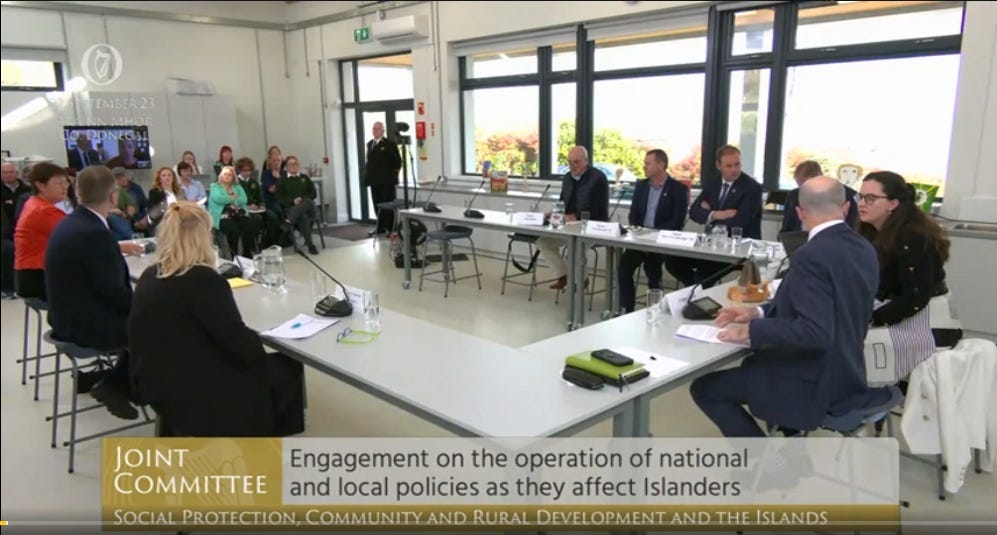Addressing the Usability Gap of Research: Lessons from Parliament
Bridging the gap between academic research and real-world policy is a challenge faced by policymakers, decision-makers and researchers across the globe. My experience chairing an Irish parliamentary committee hearing — during its historic sitting on Árainn Mhór — provides valuable lessons on how this gap can be narrowed, by placing lived experience at the centre of evidence-based decision-making. In the coming weeks, papers on this work will be presented to the academic community at the global conference of the Network for the Public Communication of Science and Technology, as well as at the 4th Global Conference on Parliamentary Studies.
The Usability Gap: From Theory to Practice
Academic research often provides the backbone for policy development, yet a persistent “usability gap” can emerge when research findings remain abstract or disconnected from the communities they are meant to serve. The committee’s approach on Árainn Mhór was to focus not just on the research itself, but on its practical application-inviting those directly affected by the research to present evidence alongside academics. This shift transformed theoretical discourse into actionable insights, making the evidence more relevant and accessible for both the politicians and the public.
Why Lived Experience Matters
Instead of relying solely on academics to interpret and present findings, the committee invited islanders-those who had collaborated on or been impacted by the research-to act as the expert witnesses. This method:
Grounded the discussion in real-world challenges, ensuring that the research was not just theoretically sound, but practically relevant.
Made the evidence more understandable for committee members and the public, as non-academic witnesses could speak directly to the tangible impacts on their lives and communities.
Encouraged greater engagement from academics, who felt more comfortable participating when their work was contextualised by community voices, rather than being subject to potentially adversarial questioning.
A Model for Evidence-Informed Policymaking
The committee’s experience demonstrated that hearing directly from those affected by research leads to more effective and empathetic policymaking. Key outcomes included:
Actionable insights for MPs: The evidence presented was not only informative but also practical, making it easier for MPs to consider how research could be applied in other rural or isolated communities.
Changes to committee work plans: The approach prompted the committee to amend its methods, incorporating evidence from those impacted by research for future hearings.
Broader policy impact: The process inspired renewed interest in academia trialling solutions on island communities before rolling out innovations nationally, particularly in rural areas.
Reflecting on the Árainn Mhór experience, several lessons emerged:
Combine lived experience with academic expertise: While community voices make the evidence relatable, this was complemented by academic input which added authority and context.
Empower communities to select their own representatives: Allowing communities to choose who presents their case ensures authenticity and relevance.
Engage directly with communities: Holding hearings in the communities affected by policy, rather than in formal committee rooms, provides richer, more grounded evidence.
The Árainn Mhór case study highlights the importance of closing the usability gap by integrating lived experience into the presentation of research evidence. Inviting witnesses with firsthand experience helped to bring academic research to life in a practical way. This approach not only tackled real-world problems but also encouraged an evidence-informed approach to policy development and fostered greater collaboration with the academic community.




